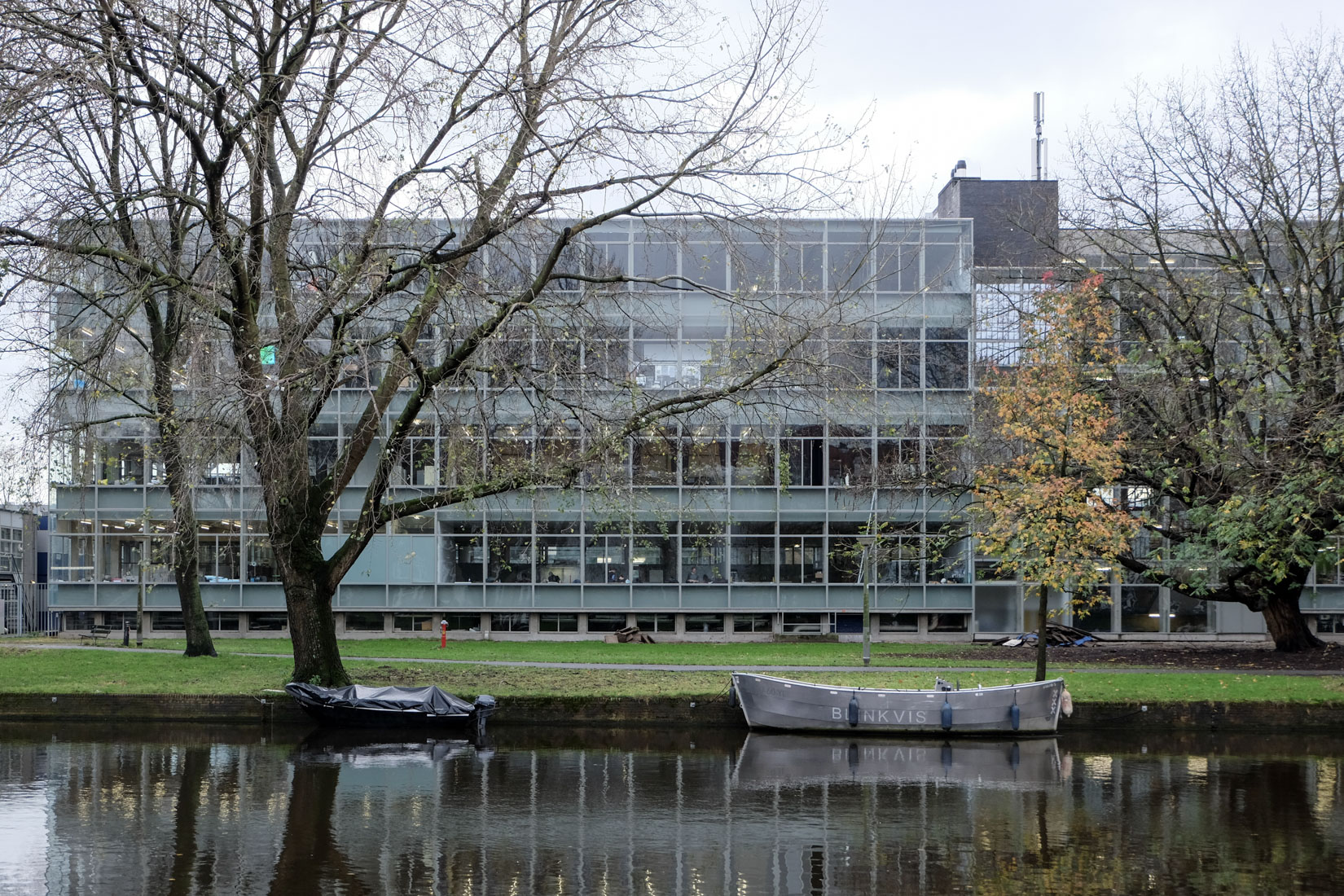 |
 |
 |
 |

Gerrit Rietveld Academy
Frederik Roeskestraat 96, Amsterdam
1959 - 1967
Between
1959 and 1967, the main building of the Gerrit Rietveld
Academy was built according to a design by the famous Dutch
architect Gerrit
Thomas Rietveld. The building of the art academy
houses classrooms for theory, design and drawing, the
assembly hall and a gymnasium. In this cubic volume, the
concrete skeleton allows for flexible room subdivision.
Workshops are located in an angular extension. This building
is the largest structure designed by Rietveld. The glass
skin is characteristic of the building. By placing the
façades about 40 cm in front of the supporting structure,
the glass skin could be stretched from the floor to the roof
without interruption. This created the impression of a
completely glass box. A lot of glass was also used inside
the building. For example, all the upper sections of the
partition walls are glazed and the majority of the walls
between the classrooms and corridors are made of glass
showcases. In 2005, the academy was restored and
extended.
In
den Jahren 1959 bis 1967 entstand das Hauptgebäude der
Gerrit Rietveld Academy nach einem Entwurf des berühmten
niederländischen Architekten Gerrit
Thomas Rietveld. Das Gebäude der Kunsthochschule birgt
Unterrichtsräume für Theorie, Design und Zeichnen, die Aula
und eine Turnhalle. In diesem kubischen Volumen erlaubt das
Betonskelett eine flexible Raumunterteilung. In einem
winkelförmigen Anbau befinden sich Werkstätten. Es handelt
sich bei diesem Gebäude um das grösste Bauwerk, das nach
einem Entwurf von Rietveld entstand. Charakteristisch für
das Gebäude ist d gläserne Haut. Indem die Fassaden rund 40
cm vor die Tragkonstruktion gesetzt wurden, konnte die
gläserne Haut ohne Unterbrechung vom Boden bis zum Dach
gespannt werden. Dadurch entstand der Eindruck einer
komplett gläsernen Kiste. Auch im Inneren des Gebäudes wurde
viel Glas verwendet. So sind zum Beispiel alle oberen
Abschnitte der Trennwände verglast und die Wände zwischen
den Klassenräumen und Fluren bestehen mehrheitlich aus
Glasvitrinen. Im Jahr 2005 wurde die Akademie
restauriert und erweitert.
